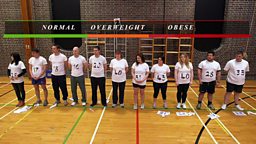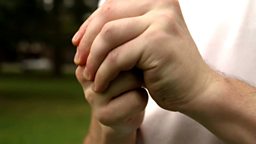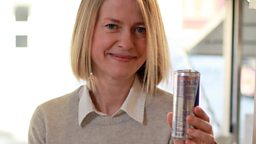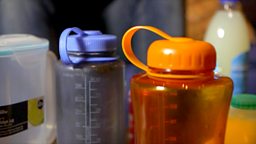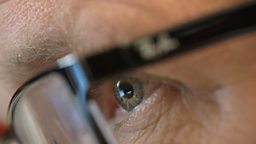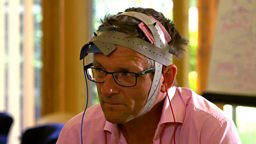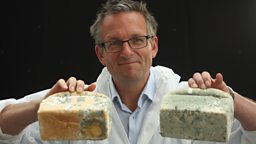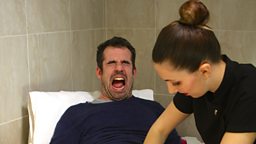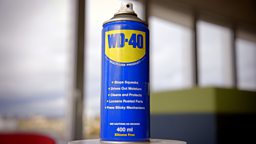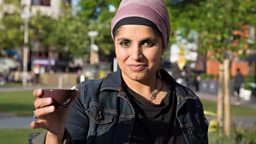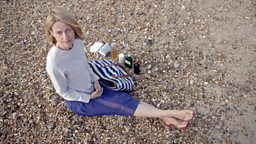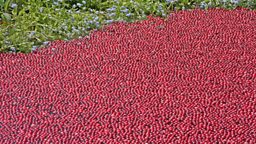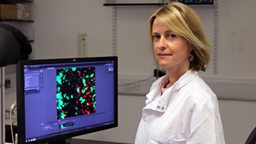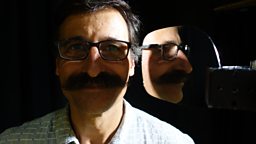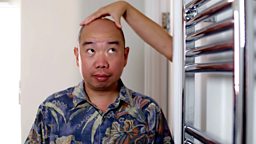What does sunlight do to skin?
After a long and dark winter the idea of sun seeking is very tempting, and – and whether the risks outweigh the benefits can come down to what sort of skin type you have and how easily you burn or tan.
People who have had sunburn are more than twice as likely to get melanoma, the deadliest form of skin cancer, and the risk is higher if you have had sunburn several times in your life.
When we go out in the sun, our body tries to defend itself from the harmful ultraviolet (UV) rays in sunlight by producing a pigment called melanin – this pigment is what gives us the colour of our skin, including that summery tan. Melanin absorbs UV radiation to help protect our skin from damage.

A camera modified so it can detect UV – a wavelength of light which we cannot see – reveals a rather interesting world of tell-tale signs that the state of our skin is not all what it seems. What the UV camera reveals is that sun sensitive skin produces patches of melanin, normally only faintly visible to the naked eye, but clearly absorbing UV. They are called freckles to you and me, and although visible ones can sometimes be viewed as cute, they actually tell us that the skin has been over exposed to ultraviolet light — most likely from sun exposure, but also sun beds!
Freckles are not harmful in themselves but it is a sign that you are overloading your skin’s ability to protect itself from UV light. Those with paler complexions, who have existing freckles or red hair will suffer the most with the consequences of not protecting their skin properly. The harmful effects of the sun’s UV rays are associated with premature aging – as much as 80% of aging is thought to be caused by the effects of UV rays. So, to avoid spending all that money on wrinkle creams – just buy some broad spectrum UVA and UVB sun cream instead, and use it from childhood to help prevent the aging in the first place!
Too much exposure to ultraviolet (UV) radiation from the sun or sunbeds is also the main cause of skin cancer. In the UK, 8 out of 10 cases of melanoma (the most dangerous form of skin cancer) could actually be prevented if we practised better sun safe habits. When we expose our skin to too much UV and burn we are potentially causing permanent changes to our DNA — like the code on a computer program becoming corrupted and not functioning as it did before.
Sunburn isn’t like a regular burn caused by contact with something too hot — it’s actually a toxic reaction. UV rays carry enough energy to break apart molecules in our skin, causing permanent damage to our cells that will remain after the redness is gone.
The best way to protect our skin is by avoiding prolonged exposure to strong sunlight. The amount of time you can safely spend in the sun without protection can vary. For those with a darker Afro/Caribbean type skin - you can safely spend an hour or possibly more in strong sunlight because your skin is melanin rich and able to protect you more efficiently than someone who is pale skinned and freckles easily.
Red haired individuals actually have a totally different type of melanin in their skin called pheomelanin. Pheomelanin is a much less efficient absorber of UV light, so if you have red hair or fair skin that freckles, then you cannot develop a protective tan and should always take care to protect your skin.
So, how do we protect ourselves properly?
There are two types of ultraviolet light which our sun cream needs to protect us from: UVA and UVB. Sun cream has a sun protection factor or SPF number, which refers to how much extra time you can spend in the sun before you burn from exposure to UVB rays only.
The sun cream should also have a star rating system relating to UVA protection. The official advice is that you should use a cream that has at least 4 to 5 stars. This is considered adequate if you apply it properly.
Applying it properly is vital – most SPF ratings are given to sun creams based on the directions on the bottle which many of us simple don’t follow. Thus we are actually decreasing the effective SPF of the sun cream by applying it too sparingly or not often enough. Our UV camera also shows us how important proper coverage is – which shows why we should re-apply every 1 to 2 hours to make sure we have got every bit of our skin.

You should also be sure to re-apply it after sweating in the heat of the sun, swimming and towelling off – this is because even the sun creams which offer the most water resistance get can be rubbed off.
Importantly cover up with lose clothing, wear a hat and slap on the sun cream – if you are a fair skinned individual you only need 2 to 5 minutes of direct sun exposure without sun cream a few times a week to make all the vitamin D you need. If you are dark-skinned then even an hour or so will give you plenty of benefit.
There is some evidence that if we expose our skin to UVA light then you can reduce your chances of developing cardiovascular disease – he argues that there is no link that sunlight reduces life span, possibly the opposite. This can make it confusing when making choices when it comes to sun safety, the sun should be enjoyed in moderation depending on your skin – experts all agree that burning your skin is bad for you and your skin, and increases your chances of developing skin cancers.
Essentially it all comes down to your skin type – red hair or freckles and you should always cover up, the darker skinned you are the better protected you are and are least likely to burn – but this offers no guarantees. It is down to what you personally deem to be an acceptable risk.
NHS guidelines state we should all be protecting ourselves in some way. Even people with darker skin are recommended to use at least factor 15 sun cream, lighter skinned people though need the most protection from high factor sun creams of SPF 30+ and 4 stars - remember it isn’t just about the damage you can see, over exposure and burning is what we must all try to avoid – the sun sees you differently!

